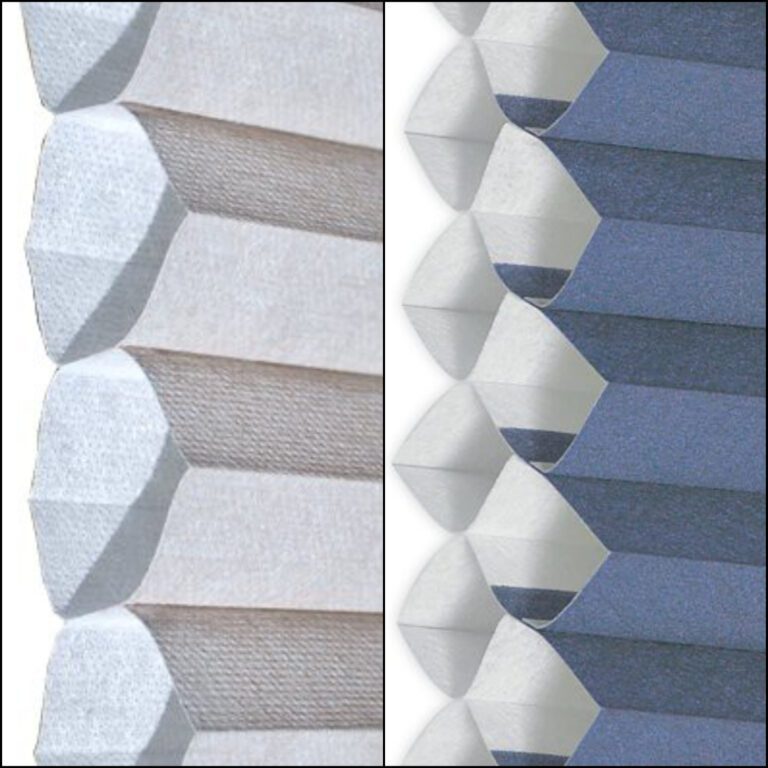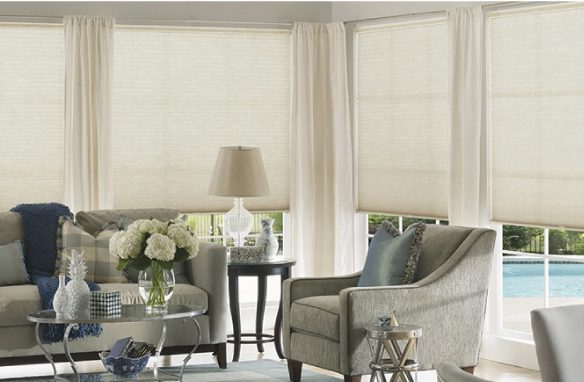When it comes to the variety of window treatments available, the amount of choice can feel overwhelming. After all, which style of shade will meet your unique needs regarding privacy, light, and insulation?
Of all the choices on the table, however, Honeycomb Shades are always a safe bet. Also called Cellular Shades, Honeycomb Shades are a simple, effective shade that excels when it comes to insulation and features such as light control and privacy. The best part? These shades are highly customizable, allowing you to select the right fabric and style for you.
Understanding Honeycomb Shades
Named for their hexagonal, honeycomb-like structure, top-quality Honeycomb shades are made from premium-quality, bonded fabrics available in light-filtering or room darkening varieties. The honeycomb design creates pockets, or “cells” which trap air, providing excellent insulation against heat and cold. However, just like other types of shades, honeycomb shades are available in a variety of styles. Particularly, they’re available in single-cell and double-cell styles. What’s the difference between the two? Let’s find out.
Single-cell vs. Double-cell Honeycomb Shades

As mentioned above, honeycomb shades are designed to trap air in their “cells,” making them an effective year-round insulator. To increase the benefits of their insulating properties, designers decided to double the honeycomb design, creating, you guessed it, double-cell honeycomb shades. This increases the effectiveness of the shades’ insulating properties, due to the fact that there are double the amount of cells.
However, while double-cell shades are better insulators, there are still quite a few benefits to purchasing single-cell shades. We dive into the benefits of each style below.
Single-cell Honeycomb Shades

Compared to double-cell honeycomb shades, the single-cell variety doesn’t offer the same level of insulation. However, they do take the cake on a host of other fronts, including:
- Aesthetic appearance: Single-cell shades are composed of one layer of larger cells compared to double-cell shades’ two rows of smaller cells, giving them a clean, contemporary look.
- Budget-friendly: Single-cell shades are typically priced lower than double-cell shades, making them a great choice for shoppers on a budget.
- Effective in temperate climates: While single-cell shades certainly aren’t as effective at insulating your home as double-cell shades, in temperate climates, insulation might not be the primary consideration. In that case, you could very well prefer single-cell shades and the other benefits they offer.
Double-cell Honeycomb Shades
As their name suggests, double-cell honeycomb shades take insulation to the next level by doubling the amount of cells. These shades consist of two layers of cells, one in front of the other. This design offers superior insulation as it creates more pockets to trap air, making them a particularly energy-efficient choice for most climates or for rooms that require more temperature control.
Double-cell shades offer the following additional benefits:
- Elevated privacy and light control: Double-cell shades are slightly less transparent due to the smaller cell size and denser structure, so they offer an elevated level of privacy and light control.
- Durability: Due to their two-layer construction, double-cell shades tend to be more durable and hold their shape well, offering an even longer lifespan compared to single-cell shades.
- Noise reduction: The same qualities that make honeycomb shades effective insulators make them effective at noise reduction. While both single-cell and double-cell shades are effective at reducing noise, double-cell shades offer superior sound reduction capabilities.
Which Should You Choose?

Making the decision between single- and double-cell shades primarily depends on your individual needs and preferences. If insulation and energy efficiency top your list of priorities, double-cell shades might be the best choice for you.
If, however, you live in a more temperate climate and prefer the aesthetics of larger pleats or want to emphasize natural light, the best choice might be single-cell shades.
With any questions about single- and double-cell honeycomb shades or the variety of colors, materials, and styles to choose from, be sure to reach out to our shade gurus to get your questions answered.
